This article is about the general concept of art. For the group of creative disciplines, see The arts. For other uses, see Art (disambiguation).
Art is a diverse range of human activities and the products of those activities, usually involving imaginative or technical skill. In their most general form these activities include the production of works of art, the criticism of art, the study of the history of art, and the aesthetic dissemination of art. This article focuses primarily on the visual arts, which includes the creation of images or objects in fields including painting, sculpture, printmaking, photography, and other visual media. Architecture is often included as one of the visual arts; however, like the decorative arts, it involves the creation of objects where the practical considerations of use are essential—in a way that they usually are not in a painting, for example. Music, theatre, film, dance, and other performing arts, as well as literature and other media such as interactive media, are included in a broader definition of art or the arts.[1] Until the 17th century, art referred to any skill or mastery and was not differentiated from crafts or sciences. In modern usage after the 17th century, where aesthetic considerations are paramount, the fine arts are separated and distinguished from acquired skills in general, such as the decorative or applied arts.
Art may be characterized in terms of mimesis (its representation of reality), expression, communication of emotion, or other qualities. During the Romantic period, art came to be seen as "a special faculty of the human mind to be classified with religion and science".[2] Though the definition of what constitutes art is disputed[3][4][5] and has changed over time, general descriptions mention an idea of imaginative or technical skill stemming from human agency[6] and creation.[7]
The nature of art, and related concepts such as creativity and interpretation, are explored in a branch of philosophy known as aesthetics.[8]
In the perspective of the history of art,[7] artistic works have existed for almost as long as humankind: from early pre-historic art to contemporary art; however, some theories restrict the concept of "artistic works" to modern Western societies.[9] One early sense of the definition of art is closely related to the older Latin meaning, which roughly translates to "skill" or "craft," as associated with words such as "artisan." English words derived from this meaning include artifact, artificial, artifice, medical arts, and military arts. However, there are many other colloquial uses of the word, all with some relation to its etymology.
Few modern scholars have been more divided than Plato and Aristotle on the question concerning the importance of art, with Aristotle strongly supporting art in general and Plato generally being opposed to its relative importance. Several dialogues in Plato tackle questions about art: Socrates says that poetry is inspired by the muses, and is not rational. He speaks approvingly of this, and other forms of divine madness (drunkenness, eroticism, and dreaming) in the Phaedrus (265a–c), and yet in the Republic wants to outlaw Homer's great poetic art, and laughter as well. In Ion, Socrates gives no hint of the disapproval of Homer that he expresses in the Republic. The dialogue Ion suggests that Homer's Iliadfunctioned in the ancient Greek world as the Bible does today in the modern Christian world: as divinely inspired literary art that can provide moral guidance, if only it can be properly interpreted. With regards to the literary art and the musical arts, Aristotle considered epic poetry, tragedy, comedy, dithyrambic poetry and music to be mimetic or imitative art, each varying in imitation by medium, object, and manner.[10] For example, music imitates with the media of rhythm and harmony, whereas dance imitates with rhythm alone, and poetry with language. The forms also differ in their object of imitation. Comedy, for instance, is a dramatic imitation of men worse than average; whereas tragedy imitates men slightly better than average. Lastly, the forms differ in their manner of imitation – through narrative or character, through change or no change, and through drama or no drama.[11] Aristotle believed that imitation is natural to mankind and constitutes one of mankind's advantages over animals.[12]
The second, and more recent, sense of the word art as an abbreviation for creative art or fine art emerged in the early 17th century.[13] Fine art refers to a skill used to express the artist's creativity, or to engage the audience's aesthetic sensibilities, or to draw the audience towards consideration of more refined or finer work of art.
Within this latter sense, the word art may refer to several things: (i) a study of a creative skill, (ii) a process of using the creative skill, (iii) a product of the creative skill, or (iv) the audience's experience with the creative skill. The creative arts (art as discipline) are a collection of disciplines which produce artworks (art as objects) that are compelled by a personal drive (art as activity) and convey a message, mood, or symbolism for the perceiver to interpret (art as experience). Art is something that stimulates an individual's thoughts, emotions, beliefs, or ideas through the senses. Works of art can be explicitly made for this purpose or interpreted on the basis of images or objects. For some scholars, such as Kant, the sciences and the arts could be distinguished by taking science as representing the domain of knowledge and the arts as representing the domain of the freedom of artistic expression.
Often, if the skill is being used in a common or practical way, people will consider it a craft instead of art. Likewise, if the skill is being used in a commercial or industrial way, it may be considered commercial art instead of fine art. On the other hand, crafts and design are sometimes considered applied art. Some art followers have argued that the difference between fine art and applied art has more to do with value judgments made about the art than any clear definitional difference.[14] However, even fine art often has goals beyond pure creativity and self-expression. The purpose of works of art may be to communicate ideas, such as in politically, spiritually, or philosophically motivated art; to create a sense of beauty (see aesthetics); to explore the nature of perception; for pleasure; or to generate strong emotions. The purpose may also be seemingly nonexistent.
The nature of art has been described by philosopher Richard Wollheim as "one of the most elusive of the traditional problems of human culture".[15] Art has been defined as a vehicle for the expression or communication of emotions and ideas, a means for exploring and appreciating formal elements for their own sake, and as mimesis orrepresentation. Art as mimesis has deep roots in the philosophy of Aristotle.[16] Leo Tolstoy identified art as a use of indirect means to communicate from one person to another.[16] Benedetto Croce and R.G. Collingwood advanced the idealist view that art expresses emotions, and that the work of art therefore essentially exists in the mind of the creator.[17][18] The theory of art as form has its roots in the philosophy of Immanuel Kant, and was developed in the early twentieth century by Roger Fry and Clive Bell. More recently, thinkers influenced by Martin Heidegger have interpreted art as the means by which a community develops for itself a medium for self-expression and interpretation.[19]George Dickie has offered an institutional theory of art that defines a work of art as any artifact upon which a qualified person or persons acting on behalf of the social institution commonly referred to as "the art world" has conferred "the status of candidate for appreciation".[20] Larry Shiner has described fine art as "not an essence or a fate but something we have made. Art as we have generally understood it is a European invention barely two hundred years old.”[21]
History
Main article: History of art
Sculptures, cave paintings, rock paintings and petroglyphs from the Upper Paleolithic dating to roughly 40,000 years ago have been found,[22] but the precise meaning of such art is often disputed because so little is known about the cultures that produced them. The oldest art objects in the world—a series of tiny, drilled snail shells about 75,000 years old—were discovered in a South African cave.[23] Containers that may have been used to hold paints have been found dating as far back as 100,000 years.[24] Etched shells by homo erectus from 430,000 and 540,000 years ago were discovered in 2014.[25]
Many great traditions in art have a foundation in the art of one of the great ancient civilizations: Ancient Egypt, Mesopotamia, Persia, India, China, Ancient Greece, Rome, as well as Inca, Maya, and Olmec. Each of these centers of early civilization developed a unique and characteristic style in its art. Because of the size and duration of these civilizations, more of their art works have survived and more of their influence has been transmitted to other cultures and later times. Some also have provided the first records of how artists worked. For example, this period of Greek art saw a veneration of the human physical form and the development of equivalent skills to show musculature, poise, beauty, and anatomically correct proportions.
In Byzantine and Medieval art of the Western Middle Ages, much art focused on the expression of subjects about Biblical and religious culture, and used styles that showed the higher glory of a heavenly world, such as the use of gold in the background of paintings, or glass in mosaics or windows, which also presented figures in idealized, patterned (flat) forms. Nevertheless, a classical realist tradition persisted in small Byzantine works, and realism steadily grew in the art of Catholic Europe.
Renaissance art had a greatly increased emphasis on the realistic depiction of the material world, and the place of humans in it, reflected in the corporeality of the human body, and development of a systematic method of graphical perspective to depict recession in a three-dimensional picture space.
In the east, Islamic art's rejection of iconography led to emphasis on geometric patterns, calligraphy, and architecture. Further east, religion dominated artistic styles and forms too. India and Tibet saw emphasis on painted sculptures and dance, while religious painting borrowed many conventions from sculpture and tended to bright contrasting colors with emphasis on outlines. China saw the flourishing of many art forms: jade carving, bronzework, pottery (including the stunning terracotta army of Emperor Qin), poetry, calligraphy, music, painting, drama, fiction, etc. Chinese styles vary greatly from era to era and each one is traditionally named after the ruling dynasty. So, for example, Tang dynasty paintings are monochromatic and sparse, emphasizing idealized landscapes, but Ming Dynasty paintings are busy and colorful, and focus on telling stories via setting and composition. Japan names its styles after imperial dynasties too, and also saw much interplay between the styles of calligraphy and painting. Woodblock printing became important in Japan after the 17th century.
The western Age of Enlightenment in the 18th century saw artistic depictions of physical and rational certainties of the clockwork universe, as well as politically revolutionary visions of a post-monarchist world, such as Blake's portrayal of Newton as a divine geometer, or David's propagandistic paintings. This led to Romantic rejections of this in favor of pictures of the emotional side and individuality of humans, exemplified in the novels of Goethe. The late 19th century then saw a host of artistic movements, such as academic art, Symbolism,impressionism and fauvism among others.
The history of twentieth-century art is a narrative of endless possibilities and the search for new standards, each being torn down in succession by the next. Thus the parameters ofImpressionism, Expressionism, Fauvism, Cubism, Dadaism, Surrealism, etc. cannot be maintained very much beyond the time of their invention. Increasing global interaction during this time saw an equivalent influence of other cultures into Western art. Thus, Japanese woodblock prints (themselves influenced by Western Renaissance draftsmanship) had an immense influence on Impressionism and subsequent development. Later, African sculptures were taken up by Picasso and to some extent by Matisse. Similarly, in the 19th and 20th centuries the West has had huge impacts on Eastern art with originally western ideas like Communism and Post-Modernism exerting a powerful influence.
Modernism, the idealistic search for truth, gave way in the latter half of the 20th century to a realization of its unattainability. Theodor W. Adorno said in 1970, "It is now taken for granted that nothing which concerns art can be taken for granted any more: neither art itself, nor art in relationship to the whole, nor even the right of art to exist."[27] Relativism was accepted as an unavoidable truth, which led to the period ofcontemporary art and postmodern criticism, where cultures of the world and of history are seen as changing forms, which can be appreciated and drawn from only with skepticism and irony. Furthermore, the separation of cultures is increasingly blurred and some argue it is now more appropriate to think in terms of a global culture, rather than of regional ones.
Forms, genres, media, and styles
Main article: The arts
The creative arts are often divided into more specific categories, each related to its technique, or medium, such as decorative arts, plastic arts, performing arts, or literature. Unlike scientific fields, art is one of the few subjects that are academically organized according to technique. An artistic medium is the substance or material the artistic work is made from, and may also refer to the technique used. For example, paint is a medium used in painting, and paper is a medium used in drawing.
An art form is the specific shape, or quality an artistic expression takes. The media used often influence the form. For example, the formof a sculpture must exist in space in three dimensions, and respond to gravity. The constraints and limitations of a particular medium are thus called its formal qualities. To give another example, the formal qualities of painting are the canvas texture, color, and brush texture. The formal qualities of video games are non-linearity, interactivity and virtual presence. The form of a particular work of art is determined by the formal qualities of the media, and is not related to the intentions of the artist or the reactions of the audience in any way whatsoever as these properties are related to content rather than form.[28]
A genre is a set of conventions and styles within a particular medium. For instance, well recognized genres in film are western, horror andromantic comedy. Genres in music include death metal and trip hop. Genres in painting include still life and pastoral landscape. A particular work of art may bend or combine genres but each genre has a recognizable group of conventions, clichés and tropes. (One note: the word genre has a second older meaning within painting; genre painting was a phrase used in the 17th to 19th centuries to refer specifically to paintings of scenes of everyday life and is still used in this way.)
The style of an artwork, artist, or movement is the distinctive method and form followed by the respective art. Any loose brushy, dripped or poured abstract painting is called expressionistic. Often a style is linked with a particular historical period, set of ideas, and particular artistic movement. So Jackson Pollock is called an Abstract Expressionist.
A particular style may have specific cultural meanings. For example, Roy Lichtenstein—a painter associated with the American Pop artmovement of the 1960s—was not a pointillist, despite his use of dots. Lichtenstein used evenly spaced Ben-Day dots (the type used to reproduce color in comic strips) as a style to question the "high" art of painting with the "low" art of comics, thus commenting on class distinctions in culture. Pointillism, a technique in late Impressionism (1880s) developed especially by the artist Georges Seurat, employs dots to create variation in color and depth in an attempt to approximate the way people really see color. Both artists use dots, but the particular style and technique relate to the artistic movement adopted by each artist.
These are all ways of beginning to define a work of art, to narrow it down.
Skill and craft
See also: Conceptual Art and Artistic Skill
Art can connote a sense of trained ability or mastery of a medium. Art can also simply refer to the developed and efficient use of alanguage to convey meaning with immediacy and or depth. Art is an act of expressing feelings, thoughts, and observations.[30] There is an understanding that is reached with the material as a result of handling it, which facilitates one's thought processes. A common view is that the epithet "art", particular in its elevated sense, requires a certain level of creative expertise by the artist, whether this be a demonstration of technical ability, an originality in stylistic approach, or a combination of these two. Traditionally skill of execution was viewed as a quality inseparable from art and thus necessary for its success; for Leonardo da Vinci, art, neither more nor less than his other endeavors, was a manifestation of skill. Rembrandt's work, now praised for its ephemeral virtues, was most admired by his contemporaries for its virtuosity. At the turn of the 20th century, the adroit performances of John Singer Sargent were alternately admired and viewed with skepticism for their manual fluency, yet at nearly the same time the artist who would become the era's most recognized and peripatetic iconoclast, Pablo Picasso, was completing a traditional academic training at which he excelled.
A common contemporary criticism of some modern art occurs along the lines of objecting to the apparent lack of skill or ability required in the production of the artistic object. In conceptual art, Marcel Duchamp's "Fountain" is among the first examples of pieces wherein the artist used found objects ("ready-made") and exercised no traditionally recognised set of skills. Tracey Emin's My Bed, or Damien Hirst's The Physical Impossibility of Death in the Mind of Someone Living follow this example and also manipulate the mass media. Emin slept (and engaged in other activities) in her bed before placing the result in a gallery as work of art. Hirst came up with the conceptual design for the artwork but has left most of the eventual creation of many works to employed artisans. Hirst's celebrity is founded entirely on his ability to produce shocking concepts. The actual production in many conceptual and contemporary works of art is a matter of assembly of found objects. However, there are many modernist and contemporary artists who continue to excel in the skills of drawing and painting and in creating hands-on works of art.
Purpose of art
Art has had a great number of different functions throughout its history, making its purpose difficult to abstract or quantify to any single concept. This does not imply that the purpose of Art is "vague", but that it has had many unique, different reasons for being created. Some of these functions of Art are provided in the following outline. The different purposes of art may be grouped according to those that are non-motivated, and those that are motivated (Lévi-Strauss)
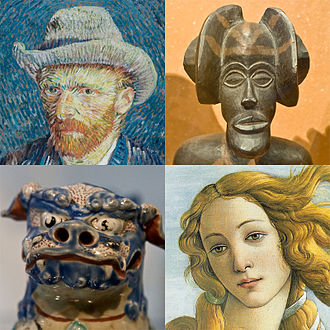
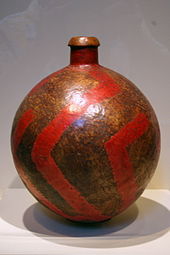
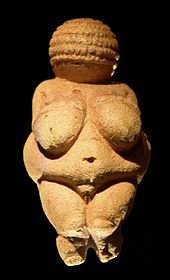



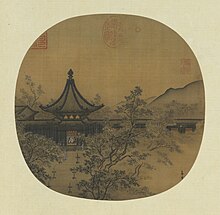
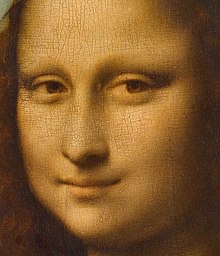


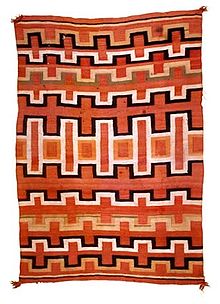

No comments:
Post a Comment